Inner Mongolia University is located in Hohhot, the capital of Inner Mongolia Autonomous Region and a famous historical and cultural city, more than 400 kilometers away from Beijing. It is the first comprehensive university established by the Party and the State in ethnic minority areas after the founding of the People's Republic of China. The school was founded in 1957 with a high starting point. Ulanfu, then Vice Premier of the State Council and Chairman of the Autonomous Region, served as the first president (1956-1968), Yu Beichen, former Deputy Director of the Comprehensive University Department of the Ministry of Higher Education, served as Vice President, and Mr. Li Jitong, a member of the Chinese Academy of Sciences, a famous biologist, a first-level professor at Peking University, and a doctor from Yale University, came to the school to teach and served as the academic vice president. The Party and the government selected a group of well-known academic leaders and academic backbones from more than a dozen famous universities in China, including Peking University, to form a high-level faculty team in the early days of the school, bringing the long-standing academic tradition and lofty university spirit of famous universities, laying a solid foundation for the school's subsequent development and a good style of study and school spirit. The university began to recruit graduate students in 1962, was identified as one of the 88 key universities in the country in 1978, was granted the right to confer doctoral degrees in 1984, was approved as a key construction university of the national "211 Project" in 1997, became a "province-ministerial co-construction" university by the People's Government of Inner Mongolia Autonomous Region and the Ministry of Education in 2004, was selected as a university in the national "Plan to Improve the Comprehensive Strength of Colleges and Universities in Central and Western China" ("one province, one university") in 2012, was selected as a national first-class discipline construction university in 2017, became a university jointly built by the Ministry of Education and the People's Government of Inner Mongolia Autonomous Region in 2018, and was selected as a national second round of "double first-class" construction university in 2022. The university has 23 colleges (including the main campus, Manchuria College, and Entrepreneurship College), and co-runs the Inner Mongolia University People's Hospital, the Affiliated Middle School of Inner Mongolia University, and the Affiliated Primary School of Inner Mongolia University. The university covers 11 major disciplines, including philosophy, economics, law, education, literature, history, science, engineering, agriculture, management, and art. It has two national key disciplines, namely Chinese Minority Languages and Literature and Zoology, and one national key cultivation discipline, namely Ecology. It has 18 autonomous region key disciplines and 8 autonomous region key cultivation disciplines. It has 13 first-level disciplines authorized to confer doctoral degrees, 24 first-level disciplines authorized to confer master's degrees, 2 second-level disciplines authorized to confer master's degrees, 15 master's professional degree authorization categories, and 9 postdoctoral research mobile stations. Biology was selected as a national "double first-class" construction discipline and an autonomous region "first-class and outstanding discipline", ecology, ethnology, chemistry, computer science and technology, Chinese language and literature, mathematics, physics, and Marxist theory were selected as the autonomous region's "first-class and outstanding cultivation disciplines", and applied economics was selected as the autonomous region's "first-class construction discipline". Five disciplines, namely chemistry, engineering, environment/ecology, materials science, and plant and animal sciences, entered the top 1% of the global ESI rankings. The school is a national-level college student innovation experiment program school and innovation and entrepreneurship training program school approved by the Ministry of Education, and one of the first national demonstration universities for deepening innovation and entrepreneurship education reform, the first national emergency education pilot school, and the first national innovation and entrepreneurship college construction unit. It currently has 85 undergraduate majors, 131 undergraduate teaching laboratories, and 192 on-campus and off-campus teaching practice and training bases. There are currently 4 national-level basic science research and teaching talent training bases, 1 Ministry of Education basic disciplines top student training program 2.0 bases, 1 national college student cultural quality education base, 1 national western excellent grassroots legal talent training base, 1 national professional comprehensive reform pilot, 2 national talent training model innovation experimental zones, 7 national characteristic majors, 33 national first-class undergraduate major construction points, 16 national first-class undergraduate courses, 2 national experimental teaching demonstration centers, 2 national college student off-campus practical education bases, and 2 Ministry of Education virtual teaching and research room construction pilots. There are 2 ideological and political teaching teams of the Ministry of Education, 4 outstanding teachers in the Inner Mongolia Autonomous Region, 4 outstanding ideological and political theory teachers in Inner Mongolia Autonomous Region universities, and 25 teaching teams in the Inner Mongolia Autonomous Region. There are 28,345 students of all kinds in the school. Among them, there are 15,958 undergraduates, 8,694 master's students, 1,143 doctoral students, and 336 international students in China. Since its establishment, a number of outstanding alumni have emerged, including Xu Rigan and Liu Yao, academicians of the Chinese Academy of Engineering, Zhang Jie, Zhao Jincai, and Zhao Gang, academicians of the Chinese Academy of Sciences. The university has 2,098 faculty members, including 1,433 full-time teachers, 307 professors and 452 associate professors. There are 4 distinguished professors of the "Changjiang Scholars Program" of the Ministry of Education, 3 winners of the National Outstanding Young Scientist Fund Project, 4 leading talents of the "Ten Thousand Talents Program", 9 "Four Youth" talents, 7 national "Hundred Thousand Talents Project", 12 young and middle-aged experts with outstanding contributions, 2 winners of the National Teaching Master Award, 2 national outstanding professional and technical talents, and 58 experts enjoying special government allowances from the State Council. One innovation team in key areas of the Ministry of Science and Technology's Innovative Talent Promotion Plan, two research teams of the Ministry of Education's "Innovative Team Development Plan", one Huang Danian-style teacher team in national universities, and two national advanced collective teams of professional and technical talents. There are 2 members of the State Council's Discipline Evaluation Group, 3 members of the Ministry of Education's Science and Technology Committee, 11 members of the Ministry of Education's Higher Education Teaching Steering Committee, 1 member of the National Higher Education Health Education Teaching Steering Committee, and 1 member of the National Vocational Education Teaching Steering Committee for National Arts. There are 10 winners of the Inner Mongolia Autonomous Region Outstanding Talent Award, 42 experts with outstanding contributions in the Inner Mongolia Autonomous Region, 143 candidates for the Inner Mongolia Autonomous Region "Grassland Talent" project, and 69 candidates for the Inner Mongolia Autonomous Region "New Century 321 Talent Project". There are 8 science and technology innovation teams in the Inner Mongolia Autonomous Region, 31 teams of the "Innovation Team Development Plan" of Inner Mongolia Autonomous Region colleges and universities, and 29 innovation teams of the Inner Mongolia Autonomous Region "Grassland Talent" project. The school currently has one national key laboratory jointly built by the province and the ministry, one research base for the four national ministries to build a strong sense of community for the Chinese nation, one national and local joint engineering research center, and one "Belt and Road" country and regional research center of the State Ethnic Affairs Commission. In addition, there are 11 ministerial key research platforms such as the Ministry of Education Key Laboratory and the Ministry of Education Engineering Research Center in the fields of biology, ecology, chemistry, computer science and technology; there are 61 key laboratories, engineering technology research centers, integrated research platforms, and key research bases in humanities and social sciences in the Inner Mongolia Autonomous Region. Since the 18th CPC National Congress, the university has completed 761 national and ministerial scientific research projects in science and engineering, approved 1,219 new projects, and hosted or undertaken 91 major national natural science projects such as the National Key R&D Program, the National Science and Technology Major Project, and the National Science and Technology Support Program. It has completed 1,139 scientific research projects in the Inner Mongolia Autonomous Region and approved 1,465 new projects. It won 1 second prize in the National Technological Invention Award, 2 second prizes in the Science and Technology Progress Award of the Ministry of Education's Higher Education Scientific Research Outstanding Achievement Award (Science and Technology), and 53 awards including the Special Prize of the Inner Mongolia Autonomous Region Natural Science Award; a total of 1,552 humanities and social science projects were approved, including 19 major projects and 20 key projects of the National Social Science Fund, 4 major research projects in the humanities and social sciences of the Ministry of Education, and 1 major commissioned project. It has won 5 Ministry of Education Outstanding Scientific Research Achievement Awards (Humanities and Social Sciences) (including 3 second prizes and 2 third prizes), 327 Inner Mongolia Autonomous Region Philosophy and Social Science Outstanding Achievement Government Awards (including 21 first prizes), 1 second prize and 2 third prizes in the National United Front Theory and Policy Research Innovation Achievements, 1 third prize in the Fourth National Ethnic Studies Outstanding Achievements, 3 second prizes in the National Civil Affairs Policy Theory Research, 1 third prize in the National Archives Administration Outstanding Science and Technology Achievements Award, 1 Excellence Award in the State Ethnic Affairs Commission Social Science Research Achievement Award (Research Report Category), and 2 third prizes in the State Ethnic Affairs Commission Social Science Research Achievement Award (Research Report Category). Focusing on the "five major tasks" assigned to Inner Mongolia by General Secretary Xi Jinping and the two major events of building a model autonomous region in all directions, we have promoted modern biological breeding projects, focused on grassland livestock germplasm innovation, successfully developed new strains of double-muscle cattle, achieved the improvement and industrial application of cattle and sheep breeding biotechnology systems and smart pastoral cloud service technology systems, established a new model of ecological breeding for cattle, sheep and camels, and carried out research and pilot promotion and demonstration of beef cattle industry models combining meat and milk industries. We have successfully obtained approval for the construction projects of the "National Sheep Genetic Evaluation Center" of the Ministry of Agriculture and the Sheep Performance Testing Station of the Inner Mongolia Autonomous Region, fundamentally solving the "neck-stuck" problem that restricts the high-quality seed sources of my country's animal husbandry industry from being restricted by foreign seed giants. The three new potato varieties selected and bred have passed the national registration, and core demonstration areas have been established in Dalate Banner, Ordos City, Hohhot City, and Taipusi Banner, Xilinguole League. Cooperate in the construction of the Inner Mongolia Grassland Health Center and take the lead in breeding two new varieties of high-quality forage. Integrate grassland adaptive grazing utilization technology, degraded grassland comprehensive improvement technology and mowed grassland sustainable utilization technology, and carry out the construction of modern family ranch ecological animal husbandry comprehensive demonstration area. Solidly promote the comprehensive management of the water ecology of "one lake and two seas" in Inner Mongolia, and propose solutions and countermeasures for water ecological restoration, water resources regulation and multifunctional maintenance of ecosystems in degraded rivers and lakes in northern China. Give full play to the advantages of the discipline, and provide important technical support for the autonomous region to develop strategic emerging photovoltaic industries and build photovoltaic towns and modern agricultural and animal husbandry integration demonstration bases. Developed the first Mongolian speech recognition and speech synthesis system in China, AI Mongolian intelligent platform, Mongolian OCR system supporting multiple fonts, Mongolian-Chinese machine translation system, Mongolian and Cyrillic Mongolian conversion system, Mongolian handwriting recognition system, etc. Strengthen the construction of the "Research Base for Strengthening the Consciousness of the Chinese Nation Community" of the four ministries and commissions of the state, and provide theoretical support for strengthening the consciousness of the Chinese nation community and doing a good job in ethnic work in the new era. The "Mongolia Research Center" and "China-Mongolia-Russia Economic Research Institute" were established; the "Inner Mongolia University Think Tank" was jointly established with the General Office of the Autonomous Region Party Committee. In 2017, the school was selected as a member of the "Belt and Road" Think Tank Cooperation Alliance. The Mongolian Studies Research Center and the Mongolian Studies Research Center were successively selected as source think tanks of the China Think Tank Index (CTTI). The Inner Mongolia Autonomous Region Energy Economic Strategy Research Think Tank Alliance and the Inner Mongolia Autonomous Region Population Strategy Research Think Tank Alliance were jointly established with the Autonomous Region Social Science Federation. The school has established cooperative and exchange relations with 114 universities and research institutions at home and abroad, and the international cooperation and exchanges between teachers and students are expanding and deepening. In cooperation with Arizona State University in the United States, the Sino-US Ecological, Energy and Sustainability Science Inner Mongolia Research Center was established, in cooperation with Aichi University in Japan, the Sino-Japanese Joint GIS Application and Regional Economic Industry Research Center was established, and in cooperation with the University of Warwick in the United Kingdom, the Sino-British Enterprise Digital Laboratory was established. The school has a Mongolian Research Center, a Russian Language and Culture Center, a Canadian Research Center, a Japanese Studies Research Center, an Australian Research Center, an American Research Center, a Sino-Japanese Exchange Window in Hohhot, and a Confucius Institute in cooperation with Kalmyk State University in Russia. The school is one of the first national demonstration bases for studying abroad in China approved by the Ministry of Education, a Chinese preparatory education base for Mongolian students in Inner Mongolia Autonomous Region, and a test site for the new Chinese proficiency online test for international students in China. It is a university that accepts Chinese government scholarships, international Chinese teacher scholarships, and Inner Mongolia Autonomous Region People's Government scholarships. The school has an International Education College, which annually accepts nearly 600 international students from 23 countries in Asia, Europe, America, and Africa, including Mongolia, Russia, the United States, Nigeria, etc. The school covers an area of 2,243.86 acres, with a building area of 777,800 square meters, and a total value of teaching and scientific research equipment of 1.433 billion yuan. The library is the Documentation and Information Center of the Ministry of Education's Ethnic Discipline Mongolian Studies, the Ministry of Education's Science and Technology Information Search Station, the National Patent Documentation Service Network Point, and the CALIS (China Higher Education Documentation Assurance System) Joint Catalog Project B-level member library, provincial central library, one of the 16 initiators of the China University Institutional Repository Alliance (CHAIR), "National Universal Reading Promotion Demonstration Base", National Intellectual Property Information Public Service Network Point, and Inner Mongolia University Intellectual Property Information Service Center. The university has a collection of 3.6791 million printed documents (3.2502 million in the main campus), 94 Chinese and foreign databases, 1.1167 million electronic books, and 6.A wireless network covering the entire school has been built, with the backbone bandwidth of the campus network reaching 40G and the export bandwidth reaching 25G. The school network center is the main node of the China Education and Research Network (CERNET) and the Next Generation Internet (CNGI-CERNET2) in Inner Mongolia and the Hohhot experimental node of the Future Internet Experimental Facility (FITI). The school adheres to the guidance of Xi Jinping Thought on Socialism with Chinese Characteristics for a New Era, conscientiously implements the spirit of the 20th National Congress of the Communist Party of China, bears in mind the spirit of General Secretary Xi Jinping’s important speech on Inner Mongolia, especially the important instructions when he visited our school, focuses on the “five major tasks” assigned to Inner Mongolia by General Secretary Xi Jinping and the two major tasks of building a model autonomous region in all directions, fully implements the party’s education policy, adheres to and strengthens the party’s overall leadership over the school, adheres to the socialist direction of running schools, takes forging a strong sense of community for the Chinese nation as the main line, implements the fundamental task of cultivating morality and educating people, upholds the school motto of “seeking truth and being pragmatic”, promotes the fine tradition of “advocating true knowledge and pursuing excellence”, takes root in the frontier, faces the whole country, looks at the world, accelerates the promotion of “Double First-Class” construction and “joint construction of the ministry and the region”, strives hard, works hard, and strives to build a first-class university that the party can trust, the people are satisfied, and has distinctive characteristics, and makes new and greater contributions to writing a new chapter of Chinese-style modernization in Inner Mongolia!
-

Tsinghua University
-

Peking University
-

Fudan University
-

Wuhan University
-

Zhejiang University
-

Nanjing University
-

Sun Yat-sen University
-

Tongji University
-

Renmin University of China
-

Jahrom University of Medical Sciences
-

Mesoamerican University
-

Istmo University
-
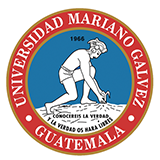
Mariano Galvez University of Guatemala
-
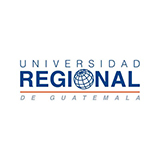
Regional University of Guatemala
-
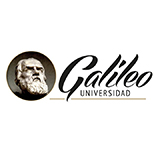
Galileo University
-
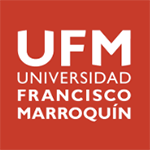
Francisco Marroquín University
-

Rafael Landívar University
-
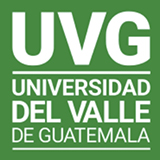
University of the Valley of Guatemala
-
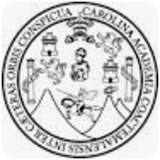
University of San Carlos of Guatemala
-

Technological Institute of Tlaxcala Plateau
-

Golfo University
-
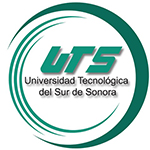
Technological University of South Sonora
-
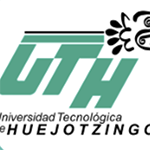
Technological University of Huejotzingo
-
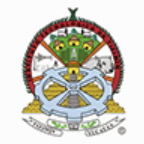
Tizimín Institute of Technology
-
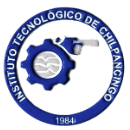
Chilpancingo Institute of Technology

